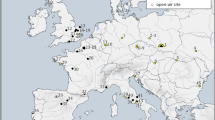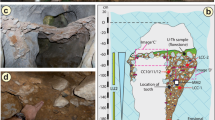Abstract
WILL you kindly allow me, as one who has made considerable additions to our Pleistocene fauna, vertebrate and invertebrate, to support Mr. Hunt's appeal for the resurrection of that vast amount of material now stored away that was obtained in Kent's Cavern? Those of us who have paid attention to the subject are aware that the recorded lists give us but a poor idea of what the caves could tell us, and that from the waste dumps have been obtained a large number of new species, and even from the lowest layers these bones include those of man himself. In these circumstances we feel the time has come, not only for this material to be put into competent hands, but for the caves to be reworked on modern lines and in the light of recent research.
This is a preview of subscription content, access via your institution
Access options
Subscribe to this journal
Receive 51 print issues and online access
$199.00 per year
only $3.90 per issue
Buy this article
- Purchase on SpringerLink
- Instant access to full article PDF
Prices may be subject to local taxes which are calculated during checkout
Similar content being viewed by others
Rights and permissions
About this article
Cite this article
ABBOTT, W. What the British Caves might tell us.. Nature 90, 382 (1912). https://doi.org/10.1038/090382c0
Issue date:
DOI: https://doi.org/10.1038/090382c0



